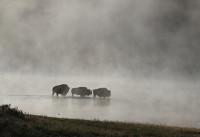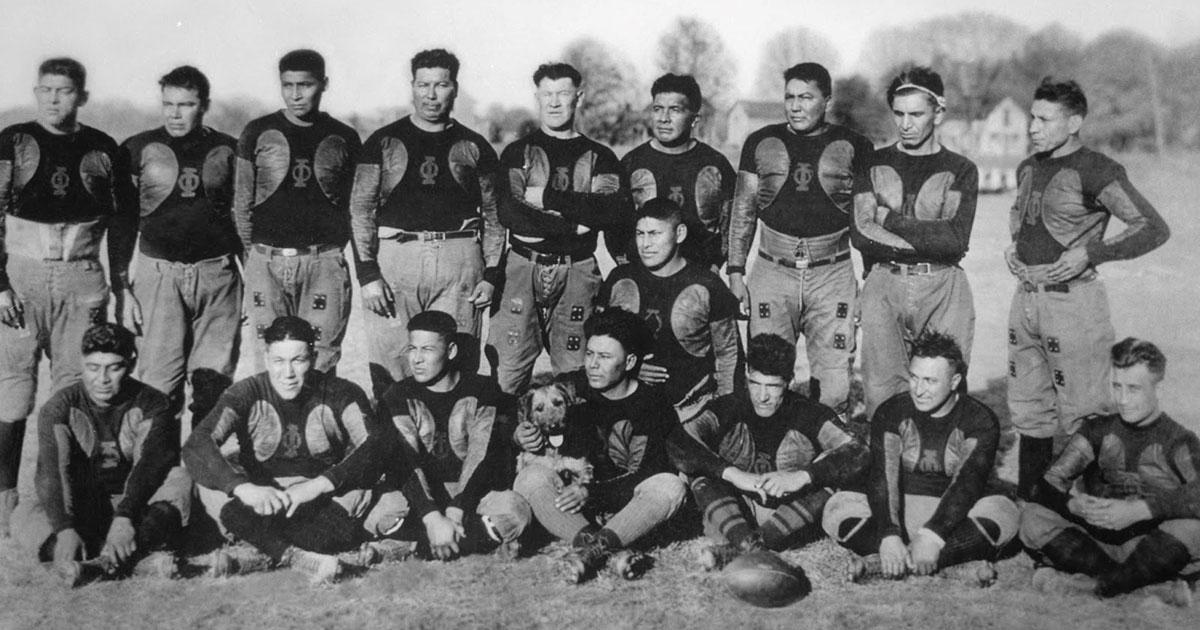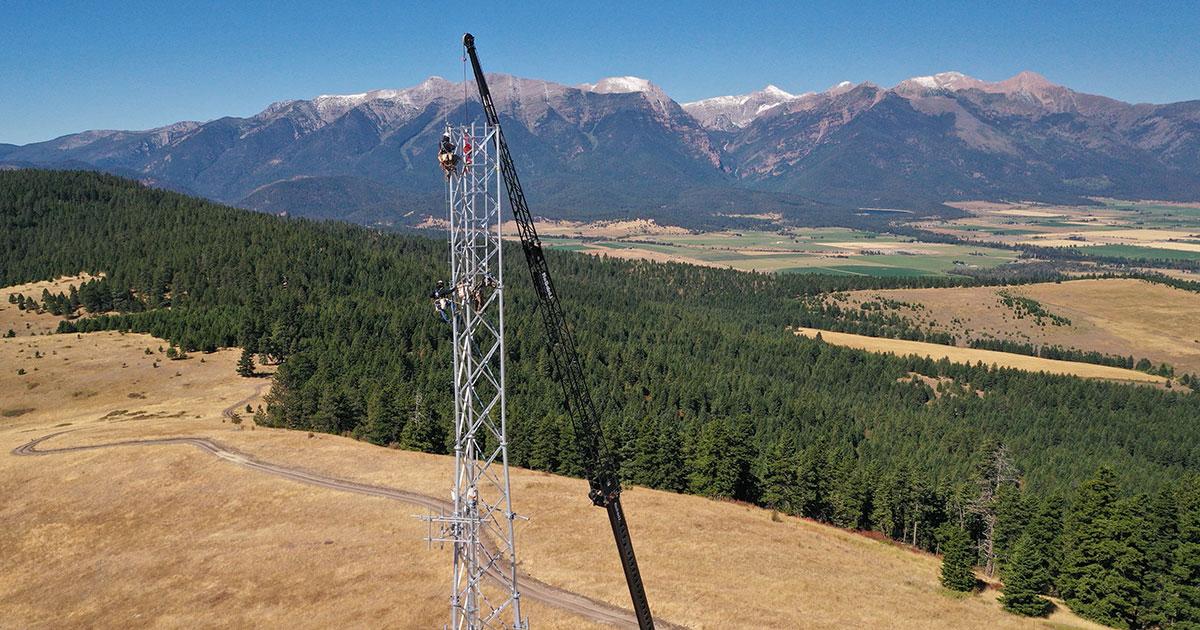
水牛——神圣的,光荣的
萨利希人、库特奈人以及美国的所有部落.S. plains and surrounding areas were dependent on the hunting of buffalo. The buffalo provided many resources; such as food, 避难所, 服装, 工具, 还有仪式圣礼. The buffalo were respected by the tribes and thanks were given to the buffalo for the continued subsistence. Many rituals and songs are about giving thanks to the buffalo.

Bison mingle at the National Bison Range on one of the many beautiful vistas of the Mission Mountains (courtesy USFW Dept. 室内).
Due to a government program that was designed to eradicate the buffalo to help defeat many Indian nations, the population of buffalo decreased to almost extinction. The 不言而喻赛利希语 and 库特奈部落(CSKT) were one of the first tribes to take steps to foster the growth of buffalo populations. Today, 的CSKT help maintain the National Bison Range a few miles from the S&K街总部. 伊格内修斯、蒙大拿. Yellowstone National Park also maintains buffalo herds, 并与许多部落签订了条约, 每年仍有野牛狩猎活动. Our people do not hunt buffalo for sport, but rather for the subsistence of our culture.
Long ago, the Salish people would travel over the mountains to the plains area to hunt buffalo. They knew how many buffalo would provide for the tribe that year and they did not waste or overkill because their livelihood depended upon the buffalo’s return. Hunting buffalo in the plains was dangerous as many tribes fought over certain hunting lands. The buffalo was so important that the Salish braved war with neighboring tribes to obtain what they needed. 萨利希人通常会和盟友部落一起打猎, such as the Niimiipuu (Nez Perce) and the Shoshoni to fend off many enemy tribes.
狩猎前, many bands or groups of families would solicit the assistance of a medicine man to help them find buffalo. The medicine man would fast and pray, often using ceremonial buffalo objects like skulls. The medicine man would relay messages from buffaloes of the past, often in an older form of the Ancient Salish Language, 或者用其他部落的语言,比如黑脚族, 乌鸦, 或苏族. 的年代alish believed that the spirit of the buffalo spoke in the language that it was most familiar with.
After a buffalo kill, the hunter kept the hide and harvested the cuts of the meat that he wanted. The remainder of the buffalo was given to other members of the tribe or hunting party. The hunters would skin and cut up the buffalo for transport to hunting camp where women would dry the meat for the winter months and prepare the other parts of the buffalo. Nothing was wasted, as it was taboo to disrespect the buffalo that gave its life for the People.

A group of Salish and Pend d’Orielle 部落成员 work on field dressing a buffalo for transportation (courtesy Shawnee Spotted Eagle).
Today, 的CSKT help maintain the National Bison Range in partnership with the U.S. 鱼类及野生动物管理局. The National Bison Range is a National Wildlife Refuge for the buffalo as well as many other species of wild animals such as antelope, 鹿, 美洲狮. The Bison Range is one of the oldest wildlife refuges in America and has about 18,800 acres of grazing land located a few miles from the S&K总部办事处. It also contains many great views of the entire Reservation and visitors can drive a scenic road to the top of the range with almost guaranteed sightings of buffalo, 麋鹿, 鹿, 甚至黑熊.
最近, a Salish hunting party was accompanied by a few students from Stanford University who are working on a documentary about the traditional buffalo hunt. The students were given full access to the hunt and recorded the process of hunting, 剥皮, and breaking down of the meat and other parts of the buffalo. The students were also given a perspective of why Indian people still hunt buffalo, which is guaranteed to the tribes by treaty with the U.S. 近年来, many organizations have protested the traditional buffalo hunts but are reminded of how non-native ancestors decimated the buffalo populations. Our tribe continues a legacy of hunting buffalo for subsistence and ceremony, not of sport. We respect the buffalo and give thanks to the buffalo that have given their lives to our people.





